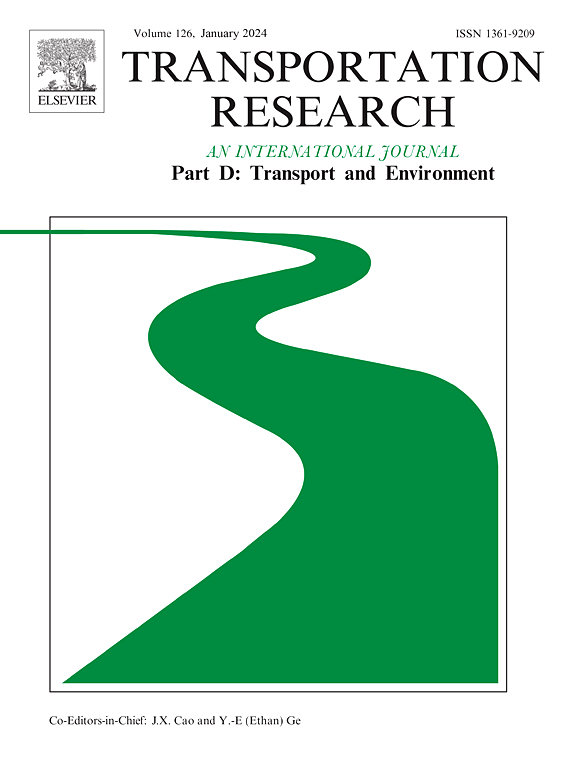纯电动汽车的里程焦虑:使用真实世界数据的量化和决定因素
IF 7.3
1区 工程技术
Q1 ENVIRONMENTAL STUDIES
Transportation Research Part D-transport and Environment
Pub Date : 2025-06-06
DOI:10.1016/j.trd.2025.104837
引用次数: 0
摘要
量化纯电动汽车的里程焦虑并识别其影响因素是分析纯电动汽车驾驶员充电和驾驶行为的基础。然而,很少有研究使用真实世界的数据来量化范围焦虑并直接揭示其决定因素。本研究基于天津438辆私人纯电动汽车2024年的充电和出行数据,利用Weber-Fechner定律量化纯电动汽车每次出行的里程焦虑,并利用机器学习模型分析其与出行、出行、充电、车辆和个人属性的关系。结果表明,出行时间是影响里程焦虑的最主要因素,并表现为边际效应递减的对数关系。频繁使用纯电动汽车和适度的充电频率与较低的里程焦虑有关。女性用户在低充电速度和低SOC条件下体验到更高的里程焦虑。年龄较大的用户通常表现出更高的里程焦虑。本文章由计算机程序翻译,如有差异,请以英文原文为准。
Range anxiety of battery electric vehicles: Quantification and determinants using real-world data
Quantifying the range anxiety of battery electric vehicles (BEVs) and identifying its determinants are essential for analyzing the charging and driving behaviors of BEV drivers. However, few studies use real-world data to quantify range anxiety and reveal its determinants directly. Based on the 2024 real-world charging and trip data collected from 438 privately owned BEVs in Tianjin, China, this study utilizes the Weber-Fechner law to quantify range anxiety of BEV for each trip and employs machine learning models to analyze its relationships with trip, travel, charging, vehicle, and individual attributes. The results indicate travel time is the most influential factor affecting range anxiety, expressing a logarithmic relationship characterized by diminishing marginal effects. Frequent BEV usage and moderate charging frequency are associated with lower range anxiety. Female users experience heightened range anxiety under low charging speeds and low SOC conditions. Older users generally exhibit higher range anxiety.
求助全文
通过发布文献求助,成功后即可免费获取论文全文。
去求助
来源期刊
CiteScore
14.40
自引率
9.20%
发文量
314
审稿时长
39 days
期刊介绍:
Transportation Research Part D: Transport and Environment focuses on original research exploring the environmental impacts of transportation, policy responses to these impacts, and their implications for transportation system design, planning, and management. The journal comprehensively covers the interaction between transportation and the environment, ranging from local effects on specific geographical areas to global implications such as natural resource depletion and atmospheric pollution.
We welcome research papers across all transportation modes, including maritime, air, and land transportation, assessing their environmental impacts broadly. Papers addressing both mobile aspects and transportation infrastructure are considered. The journal prioritizes empirical findings and policy responses of regulatory, planning, technical, or fiscal nature. Articles are policy-driven, accessible, and applicable to readers from diverse disciplines, emphasizing relevance and practicality. We encourage interdisciplinary submissions and welcome contributions from economically developing and advanced countries alike, reflecting our international orientation.

 求助内容:
求助内容: 应助结果提醒方式:
应助结果提醒方式:


